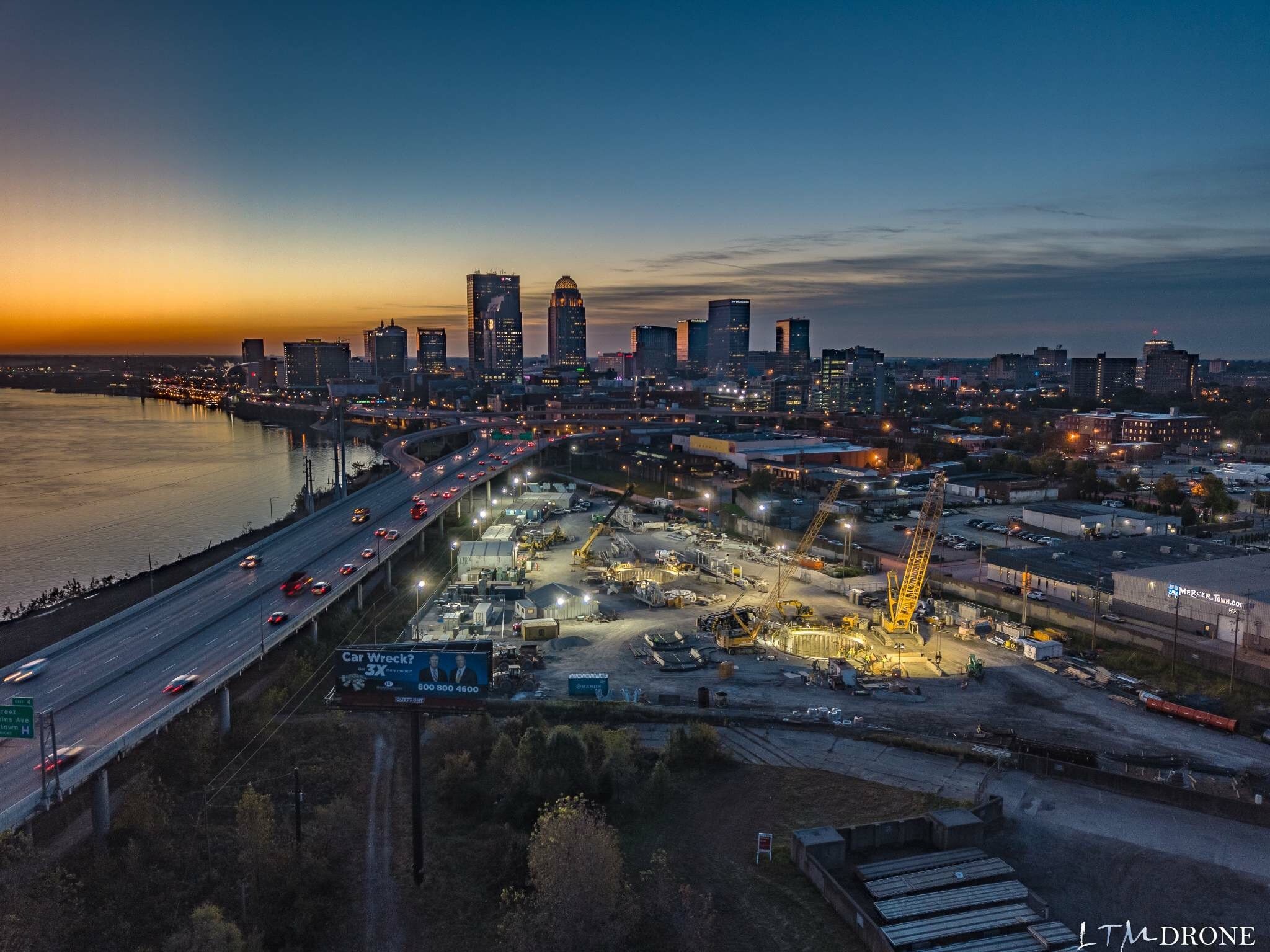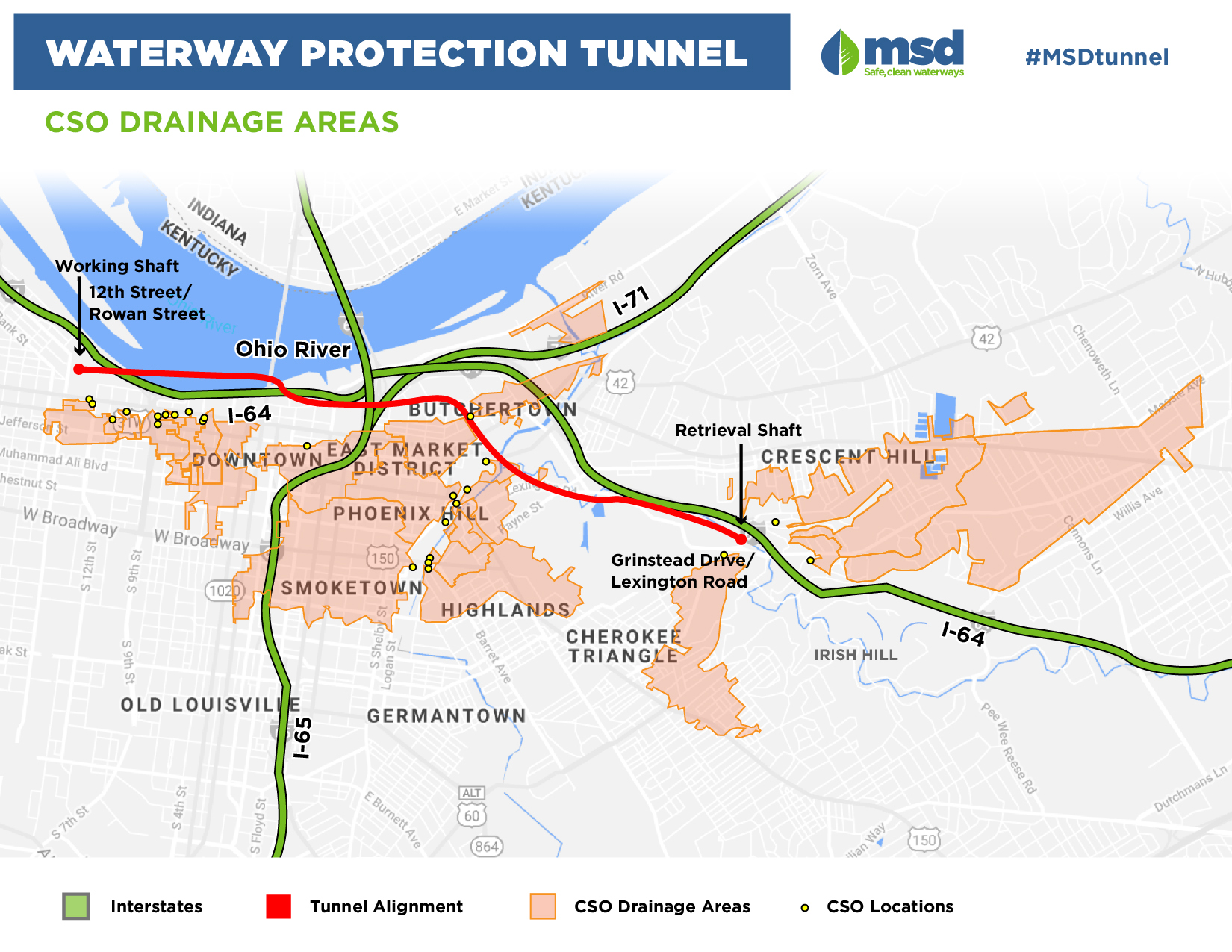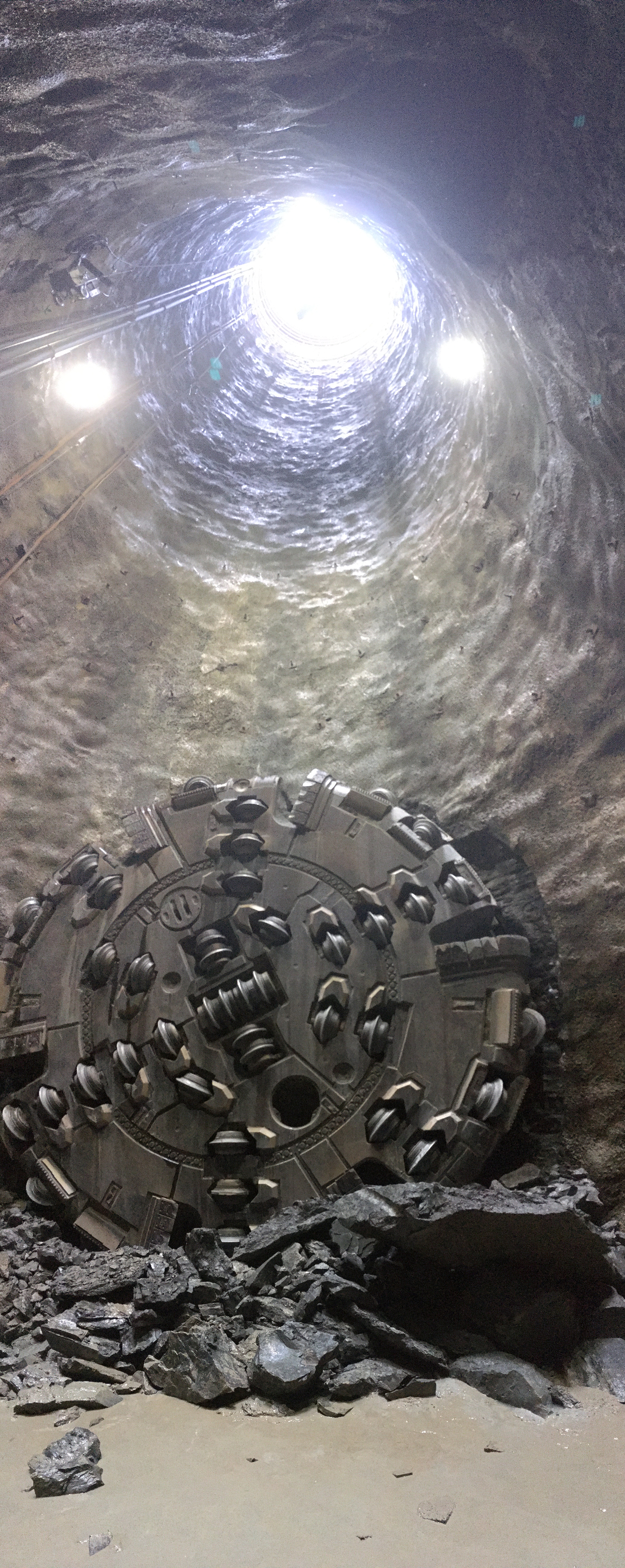
One-tenth of an inch of rain is all it takes for the combined sewer system serving the older areas of Louisville, Kentucky, to overflow. In 2005, the Louisville/Jefferson County Metropolitan Sewer District entered into a consent decree with the federal government and the state of Kentucky to address the issue of these combined sewer overflows. A mixture of untreated sewage and stormwater, CSOs threaten public health and damage the aquatic environment.
Ultimately, the district — referred to commonly as the MSD — plans to spend about $1.1 billion to reduce its CSOs by about 98 percent. Recently, the MSD achieved a key milestone in its compliance efforts, completing the excavation of a $200 million, 4 mi long tunnel that will hold up to 55 million gal. of combined sewage during a wet weather event.
As part of the consent decree, the MSD agreed to construct 13 underground basins in which to store flows from its collection system for treatment following wet weather events. Situated near existing CSO outfalls, the offline storage basins accept flows by gravity. Once water levels have declined and capacity has returned within the collection system, pumps in the storage basins return flows to the sewer system so they can undergo treatment at a water quality treatment center.
Only nine of the 13 planned basins, ranging in storage capacity from 250,000 to 20 million gal., were constructed. During the design of the remaining four basins, the district and the community grew concerned about various issues, including site contamination, potential flooding from the Ohio River, possible disturbance to Louisville’s downtown Central Business District and residential neighborhoods, and extended effects on traffic.

“As all these issues started coming up during our design, (the) MSD had to step back and think of another way, a different alternative to complete our mission and our objective,” says Jacob Mathis, P.E., M.ASCE, a senior engineer and the tunnel project manager for the MSD. The district turned to Black & Veatch, the engineer of record for one of the storage basins, which had also designed a large-scale CSO storage tunnel currently under construction in Indianapolis. “We started picking their brain on the tunnel being built in Indianapolis,” Mathis says.
Eventually, the MSD decided to replace the remaining basins with the 4 mi long Waterway Protection Tunnel, in part because the cost and risks associated with constructing a tunnel had decreased significantly since the district entered into the 2005 consent decree. Ultimately designed by Black & Veatch, the tunnel is located 185 to 215 ft below the surface and has a 22 ft excavated diameter. After it is lined, the tunnel will have a 20 ft diameter.

Such a deep tunnel also affords certain advantages when compared with a series of storage basins that are located relatively near the surface, says Alston Noronha, P.E., a construction manager for Black & Veatch, which also is serving as construction manager for the tunnel. Because the tunnel is so far underground, its construction requires only a limited amount of space at the surface. “It’s less disruptive to stakeholders,” Noronha says. Meanwhile, a tunnel facilitates higher post-construction real estate values. “If you have an underground tank, what you can build on top of it is limited,” he says. “With a tunnel that’s 200 ft deep, you can pretty much build anything on top of it.”
In fact, the tunnel passes beneath the Ohio River, three federal interstate highways, multiple streets, railroad tracks, and a creek. In November 2017, the MSD awarded the construction contract for the tunnel to a joint venture comprising the J.F. Shea Co. Inc. and Traylor Bros. Inc. Initial efforts focused on constructing eight shafts associated with the project. Begun in January 2019, tunnel excavation involved the use of a main-beam, open-face, hard-rock tunnel boring machine manufactured by the Robbins Co.
The tunnel extends through shale, limestone, and dolomite formations. After 20 months of excavation, in September 2020, the TBM broke through into the retrieval shaft at the east end of the tunnel. Lining of the tunnel with cast-in-place concrete is expected to take eight to 10 months, and the tunnel is scheduled to be operational by fall 2021, Mathis says.
In a typical year, the tunnel will capture approximately 439 million gal. of overflow that otherwise would be discharged to the environment by means of 25 CSO outfalls. Flows from these CSO locations will be diverted to the tunnel via a series of interceptor sewers that connect to one of six drop shafts located along the tunnel’s alignment. To this end, diversion structures consisting of a concrete weir wall and a stainless steel weir plate will be built downstream of the overflow points, allowing a certain volume of flow to enter the tunnel rather than discharging to the environment.
The west end of the tunnel will include a pump station with 10 pumps, each having a 5 mgd capacity. The pump station will lift flows to a gravity sewer at the surface, whereupon they will be conveyed to the MSD’s Morris Forman Water Quality Treatment Center.



